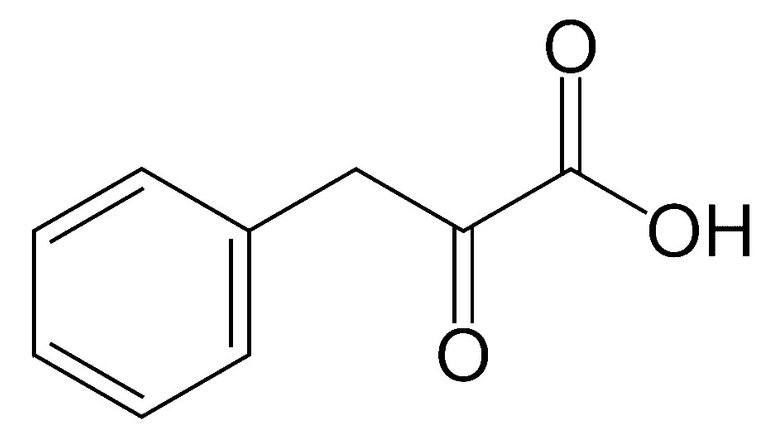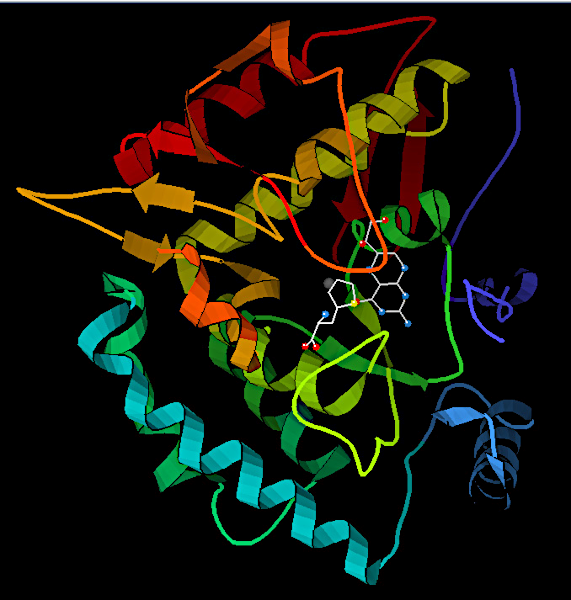When Eating Protein Can be a Death Sentence: PKU
As I prepared to write this blog the intention was to describe PKU, a potentially devastating genetic disorder. Among other ideas, I planned to describe how, in order to come up with a treatment for PKU, Dr. George Jervis experimented on disabled children. He was a research scientist at Letchworth Village, a state institution established as a residence for disabled children and adults. However, I was not going to reveal the fact that my brother was once a resident at that facility.
In writing the blog, however, it seemed disingenuous to omit this personal information. I think my emotional response to Dr. Jervis (evident in the blog) requires an honest explanation, perhaps even an admission that there may be a conflict of interest. I am not a dispassionate reporter in this instance. My awareness of what happened at Letchworth fills me with horror. My brother was loved and valued throughout his life.
An Abandoned Building in Letchworth Village

Image credit: Doug Kerr, from Albany, NY, United States. Used under a CC 2.0 generic license.
The term PKU stands for phenyketonuria. This is a genetic condition that is expressed (becomes evident) only when two copies of the affected gene are inherited. Because of this discrete pattern of inheritance, the disorder is described as an autosomal recessive condition.
One of the tragedies of PKU is that parents often don't know they are carriers. They are stunned to learn their offspring suffers from the condition. This will happen only if both parents carry the trait.
Because this disorder, and others, usually lurks hidden, a system of virtually universal newborn screening has developed. (See @cyprianj's blog of 12/28/2021 for an explanation of newborn screening.)
A Newborn is Tested for PKU

Image credit: U. S. Air Force photo, Staff Sgt. Eric T. Sheller. Public domain
PKU is a metabolic disorder. It occurs when a certain enzyme, phenylalanine hydroxylase, is absent. This enzyme ordinarily breaks down phenylalanine, an amino acid. Amino acids are the building blocks of protein, so when people with PKU eat protein, phenylalanine is not processed properly. The amino acid therefore builds up in the individual's body. Some amino acids can cross the blood/brain barrier. Phenylalanine is one of these. Because of its untempered release in the body, the amino acid accumulates in the brain. This accumulation has devastating consequences.
The consequences can be evident very soon after birth, which is why it is essential to catch the disorder before damage is done. The damage may be irreversible.
University of Oslo: PKU First Identified by Asbjørn Følling Here in 1934

Image credit: Mahlum. Used under CC 2.0 license
The mystery of PKU was unraveled by a physician with a background in chemistry and metabolic medicine. The doctor, Asbjørn Følling, agreed to see a distraught mother whose two children were severely affected by a peculiar ailment. The children suffered severe cognitive and physical impairments. The younger child was more profoundly affected than the older child.
Dr. Følling could find nothing in his physical examination of the children that would explain what was causing their symptoms. Finally, on a hunch, he performed a number of tests on their urine. The tests came back with a peculiar result, one Dr. Følling had never see before in a test on urine. To his knowledge, no one else had ever seen it before either. It took the doctor months to identify the substance, which consistently appeared in the children's urine: phenylpyruvic acid.
Here is link to a YouTube video of an interview with Dr. Følling. In the video he describes how he discovered PKU:
The detection of phenylpyruvic acid was a clue that led him and others to wonder if there might be other children who were 'feeble minded' and who also excreted the acid in their urine. Researchers looked at children who had been institutionalized in several facilities. Out of 430 children examined, 8 tested positive for the acid. Not only that, these children tended to have certain physical characteristics in common: broad shoulders, spastic gate, eczema, fair complexion.
With Følling's discovery, the hunt was on in research facilities across the world to find out why the affected children excreted phenylpyruvic acid. How did the children become afflicted, and could there be a treatment? Dr. Følling called the condition he had discovered phenylpyruvic oligophrenia.
Formula for Phenylpyruvic Acid

Image credit: Wikimedia Commons. Public domain.
Despite his findings and quest for answers, Asbjørn Følling did not experiment on children.
At this time, George Jervis worked for the New York State Department of Mental Hygiene. His research department was located in Letchworth Village, a facility where children had been institutionalized. Many of them were 'feeble minded'. At the time, Letchworth Village Administration had a working relationship with the Eugenics Record Office at Cold Spring Harbor. The records of the children at Letchworth were shared with the eugenics lab.
Residence of Charles Davenport, Head of Eugenics Lab at Cold Spring Harbor

Image credit: AdamOxalate. Used under a CC 3.0 license.
Jervis had everything he needed to do research on Følling's phenylpyruvic oligophreniathis. In his 1947 paper Jervis describes the research. While he did work with animals he also used children to find his answer. Here is some of what he wrote. His subjects were adults and children. Some were 'normal' and some were suffering from phenylpyruvic oligophrenia:
They were kept fasting 15 hours before and during the experiment. Dtyrosine (Merck), and phenylpyruvic acid were given by mouth. The dose was 5 gm.; the subjects weighed from 60 to 80 kilos. In three patients who were children, weighing from 20 to 30 kilos, the dose was 4 gm. Finally as a further control, glycine was fed in a dose of 10 gm. to normal individuals and to patients in order to determine whether an increase in Millon-reacting substances could be obtained. Blood was obtained by veni-puncture at the fasting level and at half hour intervals for the first 2 hours following the ingestion of the compound, then at hourly intervals."
Jervis concluded, correctly, from his experiments that phenylpyruvic oligophrenia resulted from an error in the metabolism of phenylalaline. In time, researchers would learn that this 'mistake' occurred because an enzyme, phenylalanine hydroxylase, was not released in the liver as it ought to be.
Structure of Phenylalanine Hydroxylase

Image credit: TimVickers at English Wikipedia. Public domain.
The challenge then became, what to do about it? Obviously afflicted children could not eat protein. Efforts to restrict protein were unsuccessful. After two weeks of a protein-deprived diet, an individual's body stopped looking for external sources of protein and began to break down protein in the person's body. Phenylalaline began once again to build up in the bloodstream.
In time, formulas were devised that would satisfy the body's hunger for protein and yet not add phenylalaline to the diet. The PKU diet became the first "medical food", and the first "dietary therapy for metabolic disease.

Important note: Aspartame contains phenylalaline. Any food containing this artificial sweetener must absolutely be avoided by people on the PKU diet.

The incidence of PKU in the global population varies by country and region. Italy has a relatively high rate, 1:4,500 individuals, Japan a relatively low rate, 1:125,000 individuals. Worldwide, Turkey has the highest incidence and Thailand the lowest incidence. (Unfortunately, no statistics are given for the continent of Africa!!)
PKU Gene Distribution Chart

Image credit:en:User:Cburnett,own work in Inkscape. Used under Creative Commons Attribution-Share Alike 3.0 Unported license
Carrying the Trait May Also Have Consequences
While development of PKU requires an individual to have two copies of the faulty gene, it seems that merely being a carrier may also have consequences. A study at a research facility (Università degli studi della Campania Luigi Vanvitelli) in Naples demonstrated that PKU carriers "...performed worse than HC on immediate verbal recall, on test assessing set-shifting, divided attention, and sensitivity to processing speed".
Conclusion
The story of PKU is a story of hope. It is one instance when a discovery led to a treatment and hope for a previously dismissed population. However, not every ray of sunshine escapes a cloud. The cloud in this case was George Jervis. I know there have been other cases (many) of experimentation on institutionalized children (and adults). In 1950, for example, Jervis "asked Dr. Hilary Koprowski to test" his polio vaccine at Letchworth. Koprowski did that. Jonas Salk tested the first flu vaccine on (adult) mental patients, and the polio vaccine on children at the Polk School (state institution), in Pennsylvania.
As I stated in my first paragraph, my brother was a resident at Letchworth. He was there after Jervis' PKU experiments were completed. Were there other experiments? Who knows. What Jervis' behavior shows is a lack of concern and respect for the people in his charge. It shows a disregard for their value as human beings. I'll end this article, which is about hope and cure, with a picture of the cemetery at Letchworth Village. The institution was closed in 1996, years after the public became aware of scandalous conditions at the institution. Note that the little metal markers are identified with numbers, not names.

Image credit: GeekontheWing CC 4.0 license

Thank you for reading my blog. It's a pleasure to be writing for StemSocial. @cyprianj is 2% beneficiary on the post because I got the idea to write about PKU when I read his blog.



Accents (paragraph separators and heart): @agmoore
1.https://www.jbc.org/article/S0021-9258(17)30882-7/pdf
2.https://www.cancer.gov/publications/dictionaries/genetics-3.dictionary/def/autosomal-recessive-inheritance
4.https://peakd.com/hive-196387/@cyprianj/genetic-testing-and-newborn-screening-what-if-there-was-none
5.https://medlineplus.gov/ency/article/001166.htm
6.https://nba.uth.tmc.edu/neuroscience/m/s4/chapter11.html
7.https://www.ncbi.nlm.nih.gov/pmc/articles/PMC408272/
8.https://www.familiprix.com/en/articles/what-is-phenylketonuria
9.https://www.sciencehistory.org/distillations/on-the-scent-the-discovery-of-pku
10.https://pkunews.org/the-discovery-of-pku/
11.
12.https://publications.aap.org/pediatrics/article-abstract/21/6/1021/40727/PHENYLPYRUVIC-OLIGOPHRENIA?redirectedFrom=fulltext
13.http://jmlevinemd.com/photographs-of-letchworth-village-asylum/
14.https://embryo.asu.edu/pages/eugenics-record-office-cold-spring-harbor-laboratory-1910-1939
15.https://www.jbc.org/article/S0021-9258(17)30882-7/pdf
16.https://www.sciencedirect.com/topics/biochemistry-genetics-and-molecular-biology/phenylalanine-hydroxylase
17.https://www.ncbi.nlm.nih.gov/pmc/articles/PMC7926728/
18.https://www.sciencedirect.com/science/article/pii/S0002929720301944
19.https://www.ncbi.nlm.nih.gov/pmc/articles/PMC7029670/
20.https://www.researchgate.net/publication/320960055_Neuropsychological_profile_in_parents_of_adult_phenylketonuria_patients
21.https://hvmag.com/life-style/history/letchworth-village-thiells/
22.http://www.annarbor.com/news/government-conducted-flu-experiments-on-patients-at-ypsilanti-area-psychiatric-hospital/
23.https://www.cbsnews.com/news/the-salk-polio-vaccine-a-medical-miracle-turns-60/
24.https://www.jhmoncrieff.com/the-sad-legacy-of-haverstraws-letchworth-village/
25.https://www.mdpi.com/2409-515X/7/1/19/htm
26.https://nbl.snl.no/Asbj%C3%B8rn_F%C3%B8lling
27.https://pubmed.ncbi.nlm.nih.gov/33804699/
28.https://www.123helpme.com/essay/The-Disease-Phenylketonuria-129741
29.http://www.huichun.tcu.edu.tw/MD_961/The%20discovery%20of%20PKU.pdf
30.https://www.proquest.com/openview/4248774df9b3143a41e9a3c2ecde0266/1?pq-origsite=gscholar&cbl=18750&diss=y
31.https://cdn.intechopen.com/pdfs/28170/InTech-Phenylketonuria_pku_a_success_story.pdf
32.https://www.lohud.com/story/news/local/rockland/stony-point/2018/10/04/look-letchworth-village-meet-people-who-impacted-village/1443112002/
33.https://citeseerx.ist.psu.edu/viewdoc/download?doi=10.1.1.653.3755&rep=rep1&type=pdf
34.https://books.google.com/books?id=5mcxAQAAMAAJ&pg=RA11-PA51&lpg=RA11-PA51&dq=Dr+George+Jervis+research+at+letchworth+village&source=bl&ots=r0ZG24qnsj&sig=ACfU3U2x-lTytjxNRZkRlmrL5ED6v2HEjA&hl=en&sa=X&ved=2ahUKEwj9qpK3vY71AhWhmOAKHfmeCL8Q6AF6BAgfEAM#v=onepage&q=Dr%20George%20Jervis%20research%20at%20letchworth%20village&f=false
35.https://books.google.com/books?id=btvl_OIhSE0C&pg=PA4&lpg=PA4&dq=dr+george+jervis+research+at+letchworth&source=bl&ots=haj8rXv7SK&sig=ACfU3U2yzIY65685vEEY5Z3Re2MQ6ExjnA&hl=en&sa=X&ved=2ahUKEwjM-9uAv471AhX7lYkEHWG2CK0Q6AF6BAggEAM#v=onepage&q=dr%20george%20jervis%20research%20at%20letchworth&f=false
36.https://www.muv.uio.no/english/history-uio/odd-hassel-nobel-laureate-chemistry.html
37.https://www.mayoclinic.org/diseases-conditions/phenylketonuria/symptoms-causes/syc-20376302
38.https://www.nature.com/articles/1602866
39.https://www.ncbi.nlm.nih.gov/pmc/articles/PMC6081236/
40.https://www.betterhealth.vic.gov.au/health/conditionsandtreatments/phenylketonuria-pku
41.https://infraredrobert.wordpress.com/2015/02/
42.https://books.google.com/books?id=hS8vDwAAQBAJ&pg=PT19&lpg=PT19&dq=%22george+jervis%22+wikimedia+commons&source=bl&ots=MfGs84W5Dh&sig=ACfU3U21okrlMaXM7cYzSABzfRrjri6Wew&hl=en&sa=X&ved=2ahUKEwjj9t-3yZb1AhXQm-AKHSfOB8cQ6AF6BAgUEAM#v=onepage&q=%22george%20jervis%22%20wikimedia%20commons&f=false
43.https://books.google.com/books?id=_bMV8GPQW2gC&pg=PA186&lpg=PA186&dq=%22george+Jervis%22+and+%22Hilary+koprowski%22&source=bl&ots=tRWJUT_xdY&sig=ACfU3U2npNlmpXzdynks2ia1qyYXxTWcnA&hl=en&sa=X&ved=2ahUKEwi814zC95b1AhWGlYkEHYgVC5QQ6AF6BAgeEAM#v=onepage&q=%22george%20Jervis%22%20and%20%22Hilary%20koprowski%22&f=false
I am speechless after reading this blog. It was very interesting in terms of learning novelties. However, the personal part is very sad.
The only thing I can say is that back in the days, ethics was by no means a concern. It is good to see that we (as humans) have evolved in the good way. Now it even goes further, animal considerations being put on the front scene too. This being said, it is clear that it hurts to think about everything that has been done in the past, especially as this was considered as normal (even if it is by far not normal). We should not forget this, to avoid reproducing such a behaviour in the future.
I hope your brother had a nice and funny life, despite of his condition.
Hello @lemouth,
I hesitated to share the personal information, but that would not have been honest. I obviously have an agenda.
At the same time we were prosecuting people at the Nuremberg Trials for performing medical experiments on humans, there were doctors performing experiments on helpless humans here, in the U.S. I think we have to let researchers know we are watching. Issues of informed consent loom large, even today. This is a whole area of medical ethics where I think people (even lay people) overlook the process because they have a goal that seems so important.
You bring up animals. Yes, we are responsible for them. I believe our ambition for answers should never lead us to dismiss suffering we impose on them.
As for my brother: the sweetest person ever. Thank you for your kind words about him. I promise my future blogs will be more cheerful in content.
It's wonderful that you are back active at Stemsocial. I hope circumstances allow you to continue and the rest of us to participate.
Take care.
You are of course right. Ethics has never worked uniformly, if you see what I mean. You brought another proof...
We should always be careful not to making anyone or any living being suffering. And this should apply to science but also to any moment in life. Unfortunately, as I said, this ideal situation is far from being realised (damned humans...).
Have a nice end of the week. I am trying to stay as active as I used to be. It starts to be tough with the preparation of the upcoming lectures (and a bunch of referee reports to answer; including that of the paper I detailed in my previous blog), but I should manage, at least for now!
Thanks for your contribution to the STEMsocial community. Feel free to join us on discord to get to know the rest of us!
Please consider delegating to the @stemsocial account (85% of the curation rewards are returned).
Thanks for including @stemsocial as a beneficiary, which gives you stronger support.
Thank you @stemsocial. I am very grateful for your support!
Your content has been voted as a part of Encouragement program. Keep up the good work!
Use Ecency daily to boost your growth on platform!
Support Ecency
Vote for new Proposal
Delegate HP and earn more
Thank you very much @ecency for the encouragement. I am encouraged :)
Indeed an in-depth post by all means.
Luckily for our dispensation, we are much wiser and advanced now. Atleast we are able to check all this genetic disease ahead of Time.
Your brilliant blog on newborn screening gave me the impetus to research and write about PKU. As for in-depth, I love to do research and write about it. StemSocial is one of the few communities where this kind of blogging is welcome.
Thank you for reading and for your kind comment.
I even forgot to thank you for the mention and your kind generosity in making me a beneficiary.
With a grateful heart I say thank you.
You deserve the notice. You are most welcome
I am hearing first time about the PKU and learned a lot about this. Thanks dear.
Thank you for reading my post. I got the idea to write it from reading @cyprianj's blog (referred to in my post). That would also be a good read.
Wishing you a happy, healthy New Year.